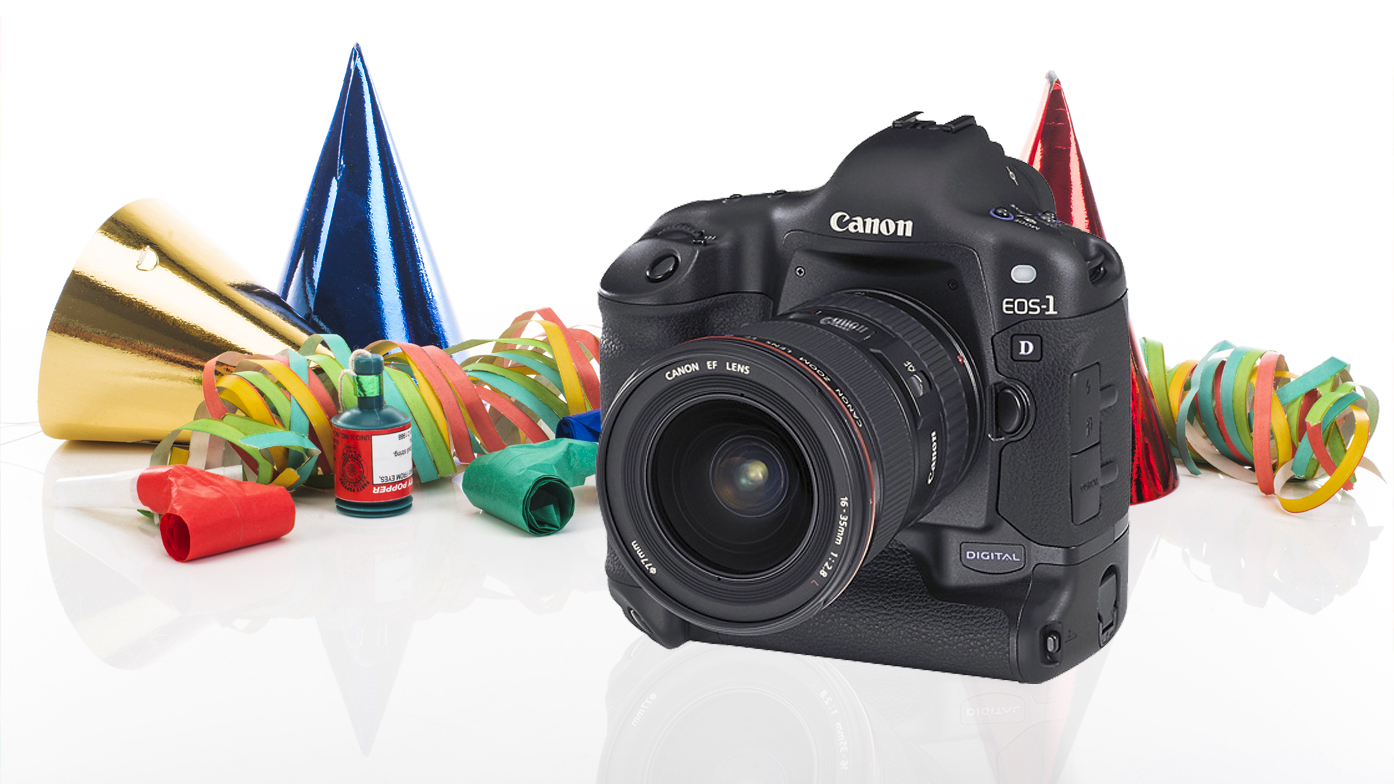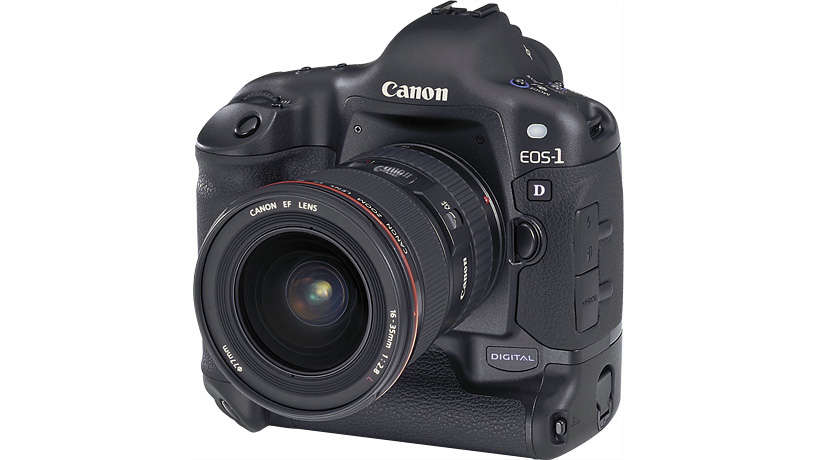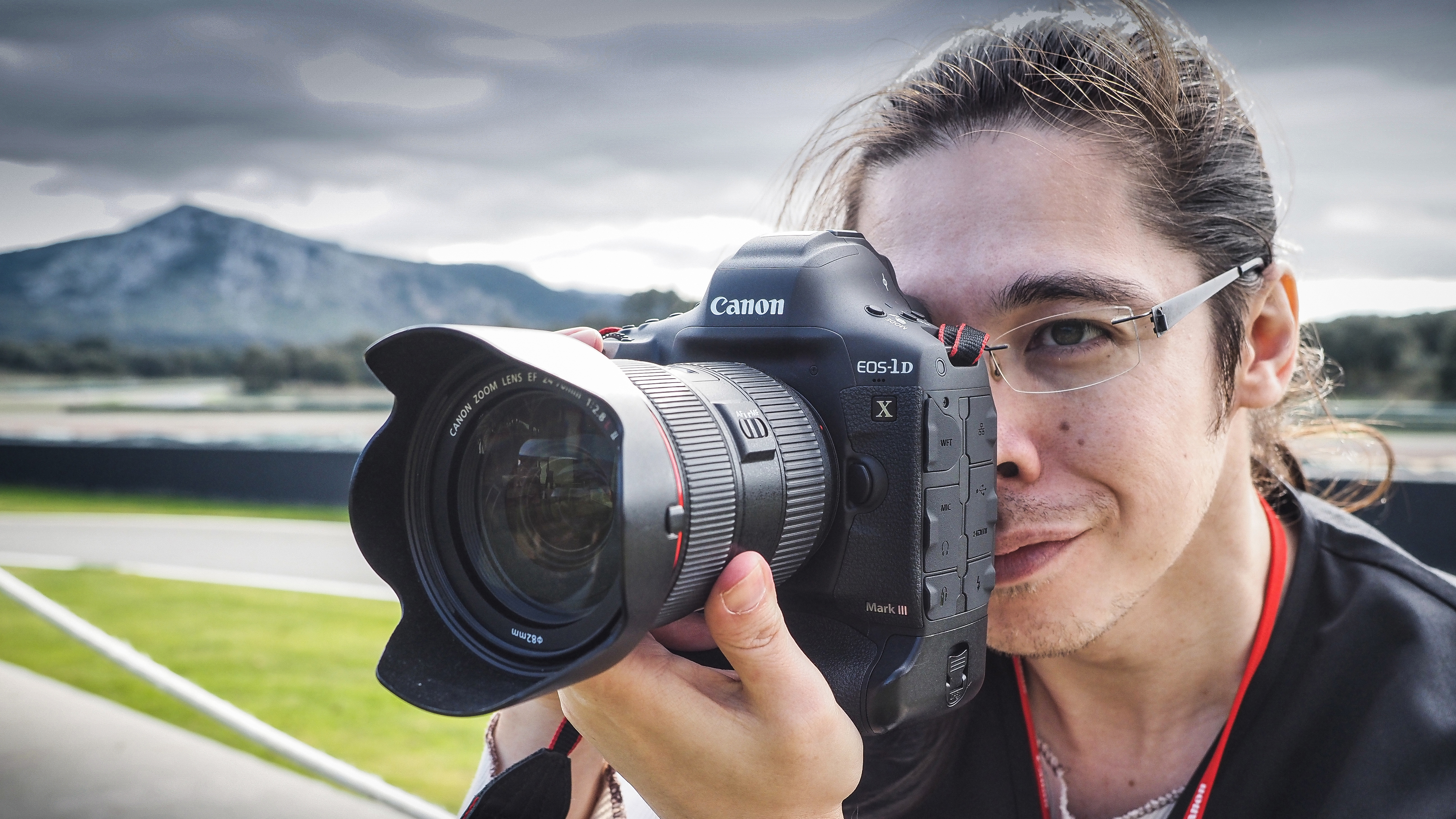Canon's first pro camera, the Canon EOS-1D, turns 20 years old
Canon’s first professional DSLR marked a major step forward. On its 20th birthday, we take a look back at the Canon EOS-1D

On 24 September 2001, Canon announced the Canon EOS-1D. This was the first “all-Canon” DSLR marketed specifically to professional photographers.
What did “all-Canon'' mean? Previously, Canon DSLRs had been produced in conjunction with Kodak – resulting in cameras like the Canon EOS D2000, which was essentially a Kodak digital camera’s innards housed in a Canon film SLR’s body. The firm had struck out on its own the previous year with the introduction of the Canon EOS D30, which had been largely well received, but was an enthusiast’s camera, not a professional’s, with an APS-C sensor.
• Read more: Best Canon cameras
So, a year later, in comes the Canon EOS-1D. It used the APS-H sensor format (not full-frame, but larger than APS-C), had faster-than-ever burst shooting, and was built like a tank. It looked like Canon professional photographers who had been patiently waiting to make the jump to digital finally had their prayers answered. Was the EOS-1D everything they’d wanted and more?
Canon EOS-1D: Specifications
- 4.15MP APS-H CCD sensor
- Canon EF lens mount (crop factor 1.3x)
- 45 AF points
- Shutter speeds: 1/16,000 to 30 sec
- High-speed continuous burst: 8fps
- 2-inch fixed LCD monitor, 120,000 dots

Canon EOS-1D: In use
The Canon EOS-1D was essentially identical in appearance to the Canon EOS-1V, the firm’s last professional film SLR, giving it a real sense of a baton being passed. The robust, high-quality polycarbonate and magnesium alloy body of the EOS-1V had been praised by pro photographers, as had its snappy, 45-point autofocus system – and all this got passed onto the EOS-1D.
Some photographers questioned the use of a CCD sensor, rather than the newfangled CMOS type of sensor they’d started seeing in other cameras – not least Canon’s own D30. And resolution of only 4MP, too, rather than the 6MP they’d been hoping for, not to mention APS-H rather than full-frame – what gives, Canon?!
It was all to do with speed. Canon was making a play for sports and news photographers, many of whom had found the firm’s previous digital offerings frustrating. The Kodak-partnered digital cameras had suffered from pretty serious shutter lag, to the point where sports photographers had to anticipate crucial moments and press the button before they happened if they were to have any hope of capturing them.
Get the Digital Camera World Newsletter
The best camera deals, reviews, product advice, and unmissable photography news, direct to your inbox!
A resolution of 4MP not 6MP meant smaller files, and ensured that the EOS-1D could keep up with its own 8fps burst modes. And in the days when photographers were transferring their images to newsrooms via shaky wire connections in hotel lobbies, or in jammed sports arenas with 30 other photographers trying to do the same thing, a large file would not be a help, it’d be a hindrance. A lower resolution and smaller file size kept the EOS-1D from tripping over itself.
All this made it abundantly clear, if it hadn’t been already, that digital was the future – and the future was now. It seems incredible to think of this today, but the biggest compliment that photographers could (and did) pay to the EOS-1D was that it meant they were capable of getting high-quality images with the same consistency as they did when shooting film.
Another interesting feature of the Canon EOS-1D was that it included a built-in microphone – but this wasn’t for video, which the camera of course was not capable of capturing. It was to enable users to attach voice memos to their images! A feature that continues in pro bodies to this day.
Canon EOS-1D: Legacy

The Canon EOS-1D made digital a truly viable option for working news and sports photographers, and is still a name still synonymous with such shooters today. The Canon EOS-1D Mark II would arrive three years later, the first Canon pro DSLR to have slots for SD cards and CompactFlash cards, a dual-format approach still seen in pro cameras today.
This camera would go through four iterations, all still using the APS-H sensor format, until the series was rebooted with the Canon EOS-1D X in 2012. Here the series made the switch to a full frame sensor and never looked back, consigning APS-H to the footnotes of history.
Here we’re getting to the parts of the story most contemporary photographers are familiar with. The EOS-1D X series has gone through three iterations, but the design philosophy of the original EOS-1D has remained in its DNA, pairing a robust, pro-quality body with fast burst-shooting and high-speed autofocus.
The Canon EOS-1D X Mark III was released in 2020, and is very possibly the best professional DSLR ever made, absolutely packed with cutting-edge technology like machine-learned autofocus, uncropped 4K video, 16fps burst shooting and a 400,000-pixel metering sensor.
Will there be an EOS-1D X Mark IV? It’s tough to say. Canon clearly wants its professional users to make the jump to its mirrorless cameras, such as the new Canon EOS R3, and this is clearly where it’s focusing its efforts in technological development.
It’s possible in the future, then, that the most pertinent point of comparison for the EOS-1DX Mark III won’t be the original EOS-1D, but the EOS-1V – the final professional film SLR. If so, it’s appropriate that the series that began the era of the professional DSLR should also be the series that sees the curtain come down. It's hard to think of a better legacy than that!
Read more:
Best professional cameras
Canon EOS-1D X Mark III review
Canon EOS R3 review
Jon spent years at IPC Media writing features, news, reviews and other photography content for publications such as Amateur Photographer and What Digital Camera in both print and digital form. With his additional experience for outlets like Photomonitor, this makes Jon one of our go-to specialists when it comes to all aspects of photography, from cameras and action cameras to lenses and memory cards, flash diffusers and triggers, batteries and memory cards, selfie sticks and gimbals, and much more besides.
An NCTJ-qualified journalist, he has also contributed to Shortlist, The Skinny, ThreeWeeks Edinburgh, The Guardian, Trusted Reviews, CreativeBLOQ, and probably quite a few others I’ve forgotten.

